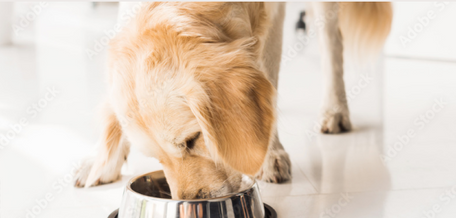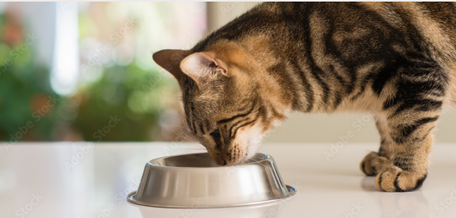Effective Strategies to Ease Your Dog’s Raw Food Transition
Switching your dog to a raw food diet can be a game-changer for their health, offering benefits like shinier coats, better energy levels, and improved overall vitality. I will be the first to tell you it's made a world of difference for my dog Max. But it hasn't been easy. The transition to raw has NOT been smooth sailing. Many pet owners that switch to a raw diet encounter digestive issues in their dogs during the switch. Upset stomachs can manifest as loose stools, vomiting, or even constipation. If you're searching for "dog digestive upset raw transition" or "how to handle diarrhea in dogs switching to raw," you're in the right place! We hope this blog will be a helpful one. We will look at why these issues occur, what signs to look for, and practical steps to ease your pup through the process safely.
If you are new to raw pet food and a new customer to BJ's Raw Pet food, check out our intro package which will help make your transition to raw food easier. Shop now to get 40% off!

Understanding Why Digestive Upset Happens During Raw Food Transition
Transitioning to a raw dog food diet involves ditching processed kibble or canned food to fresh, all-natural uncooked meats, bones, organs, and veggies. This change can shock your dog's digestive system for several reasons:
- Gut Flora Adjustment: Dogs on commercial diets have a different microbiome than those on raw. The introduction of raw proteins and enzymes requires time for beneficial bacteria to adapt, potentially leading to temporary imbalances.
- Detoxification Process: Some experts believe that as the body expels toxins from previous diets, symptoms like diarrhea or lethargy can appear. This is often called a "detox phase" in raw feeding communities.
- Sudden Dietary Shift: Abrupt changes can overwhelm the digestive tract. Raw food is more nutrient-dense and bioavailable, which might cause initial overload if not introduced gradually.
- Individual Factors: Breed, age, pre-existing health conditions, or even stress can exacerbate issues. Puppies and senior dogs might be more sensitive during the raw diet transition.
By recognizing these causes, you can approach the situation with patience. And trust me you will need a lot of patience! Remember, mild digestive upset is common and usually resolves within 1-2 weeks, but persistent problems warrant professional attention.
Signs of Digestive Upset in Dogs Switching to Raw
Early detection is key to managing digestive issues effectively. Keep an eye out for these common symptoms:
- Diarrhea or Loose Stools: Often the first sign, ranging from soft to watery. It might include mucus or blood in severe cases.
- Vomiting: Your dog may regurgitate undigested raw food, especially if portions are too large.
- Constipation: Less common but possible if the diet is too bone-heavy without enough moisture.
- Gas and Bloating: Excessive flatulence or a distended abdomen indicates fermentation in the gut.
- Lethargy or Loss of Appetite: If your dog seems uninterested in food or unusually tired, it could signal discomfort.
- Abdominal Pain: Whining, restlessness, or guarding the belly area are red flags.
If symptoms last more than 48 hours, worsen, or include dehydration (sunken eyes, dry gums), consult your vet immediately to rule out underlying issues like parasites or allergies.
Step-by-Step Guide: What to Do for Dog Digestive Upset During Raw Transition
Don't panic—most cases can be managed at home with simple adjustments. Here's a actionable plan to help your dog through raw food digestive problems:
1. Slow Down the Transition Process
Rushing the switch is a top culprit. Instead of going cold turkey:
- Start with a 25/75 mix (25% raw, 75% old food) for 3-4 days.
- Gradually increase to 50/50, then 75/25, over 1-2 weeks.
- Monitor daily and extend phases if upset occurs.
This gradual approach gives the digestive system time to acclimate, reducing the risk of raw diet diarrhea in dogs. A gradual approach is key.
2. Incorporate Probiotics and Digestive Aids
Support your dog's gut health with natural supplements:
- Probiotics: Add dog-specific strains like Lactobacillus or Bifidobacterium to restore balance. Start with a small dose and build up.
- Digestive Enzymes: These help break down raw proteins and fats. Products like pancreatin or plant-based enzymes can be sprinkled on meals.
- Bone Broth: Homemade or store-bought (low-sodium) bone broth soothes the gut lining and provides hydration.
Always choose vet-approved supplements to avoid interactions.
3. Adjust Portions and Meal Frequency
Overfeeding can exacerbate issues:
- Reduce portion sizes by 10-20% temporarily.
- Feed smaller, more frequent meals (e.g., 3-4 times a day instead of 2).
- Ensure a balanced raw diet: 80% muscle meat, 10% bone, 10% organs, with occasional veggies for fiber.
Track your dog's weight and stool quality to fine-tune.
4. Prioritize Hydration and Fiber
Dehydration worsens digestive upset:
- Encourage water intake by adding it to meals or using a fountain.
- Introduce fiber sources like pureed pumpkin (1-2 tsp per 10 lbs of body weight) to firm up stools.
- Avoid dairy, as many dogs are lactose intolerant.
5. Monitor and Journal Symptoms
Keep a daily log:
- Note food intake, stool consistency (use the Bristol Stool Chart for dogs), and any changes.
- This helps identify triggers, like specific proteins (e.g., chicken vs. beef).
If home remedies don't help within 3-5 days, seek veterinary advice. Your vet might recommend fecal tests or a temporary bland diet (boiled chicken and rice) as a reset.

Preventing Digestive Upset in Future Raw Transitions
Prevention is better than cure. Here are tips for a smoother raw dog food switch next time:
- Consult a Vet First: Get a health check-up to ensure your dog is ready.
- Choose Quality Raw Food: Here at BJ's we pride ourselves in high-quality, all-natural ingredients, sourced locally in Lancaster, PA.
- Introduce One Protein at a Time: Start with a single source (e.g., turkey) to spot allergies.
- Maintain Consistency: Stick to a routine feeding schedule.
- Educate Yourself: Join raw feeding groups or read books like "The Barf Diet" by Dr. Ian Billinghurst for insights.
With these strategies, you can minimize "raw transition tummy troubles" and set your dog up for long-term success.
When to Seek Professional Help
While mild upset is normal, don't ignore severe signs:
- Persistent vomiting/diarrhea leading to weight loss.
- Blood in stool or vomit.
- Extreme lethargy or collapse.
Emergency vet visits are crucial in these cases, as they could indicate pancreatitis, infections, or other serious conditions.
Final Thoughts on Managing Dog Digestive Issues in Raw Feeding
Transitioning your dog to raw food is an investment in their well-being, but digestive upset during the process is a common hurdle. By slowing the pace, adding supportive supplements, and staying vigilant, most issues resolve quickly. Patience is key—your furry friend will thank you with wagging tails and boundless energy once adjusted.
Disclaimer: This article is for informational purposes only and not a substitute for veterinary advice. Always consult a professional for personalized guidance.




















